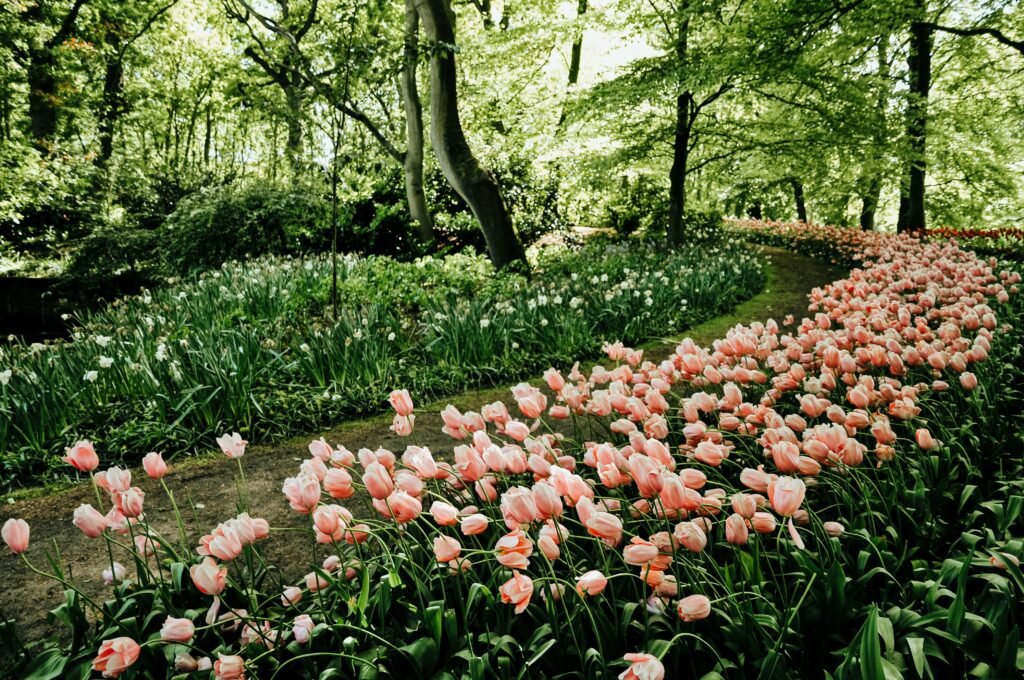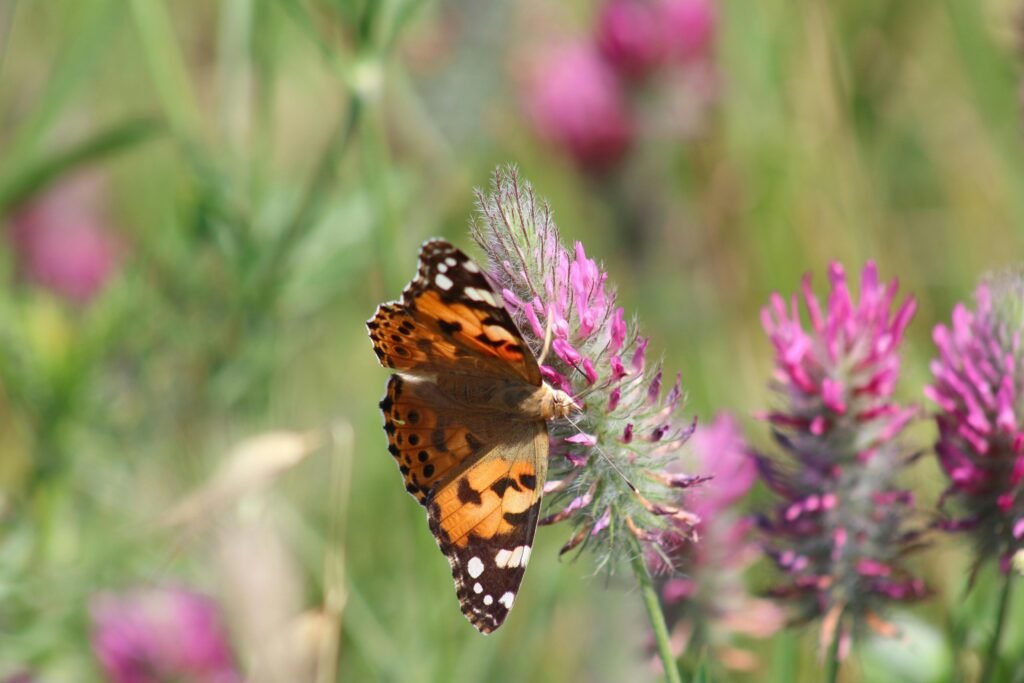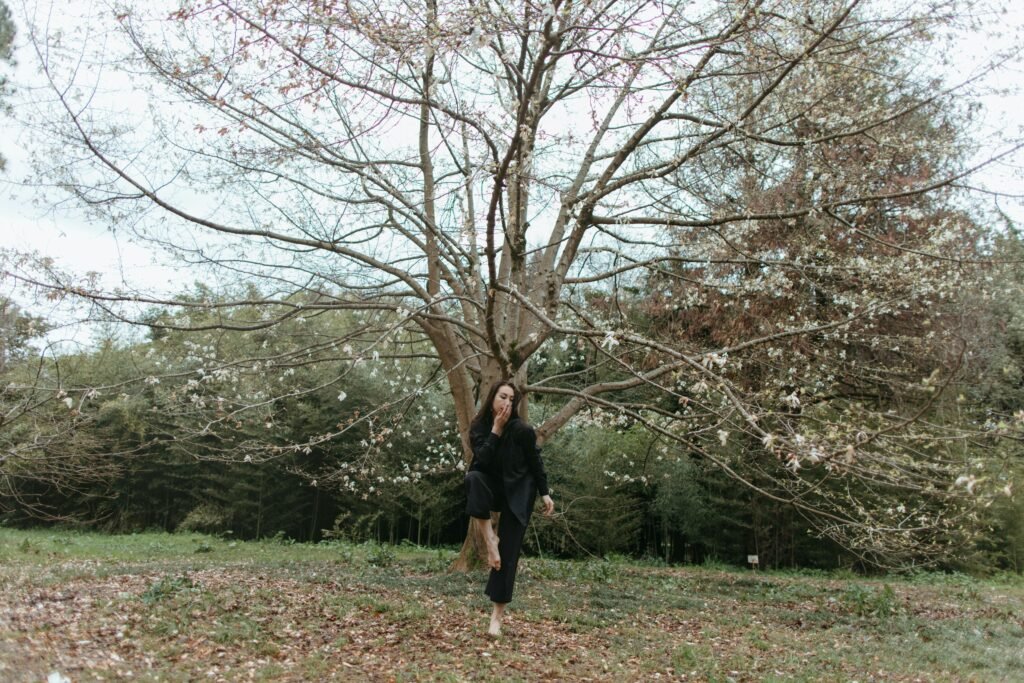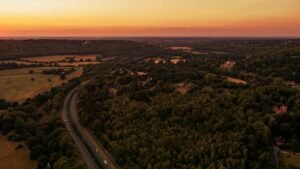Tucked away in one of Chicago’s most beloved neighborhoods lies a flourishing natural wonder you might not have heard of yet — the Macro-Botanical Gardens in Lincoln Park IL. While Lincoln Park is often known for its lakefront trails, historic zoo, and expansive parklands, this hidden gem stands out as one of the most enriching Lincoln Park nature attractions.
What makes these gardens so special isn’t just their size or location, but their mission. With a strong focus on conservation, education, and eco-conscious design, the Macro-Botanical Gardens are redefining what urban green spaces in Chicago can look like. From showcasing native Illinois plants to promoting sustainable landscaping in Illinois, the gardens serve as both a peaceful retreat and an open-air classroom for all ages.
In this post, we’ll explore the unique features that set this garden apart, why it’s a must-visit destination for nature lovers and families, and how it’s become a model for sustainable green spaces across the Midwest.
Table of Contents
What Are Macro-Botanical Gardens?
Macro-Botanical Gardens in Lincoln Park IL are not your typical city gardens. The term “macro” refers to large-scale, immersive displays of diverse plant ecosystems that replicate entire environments. These gardens are more than scenic — they are interactive, educational, and rooted in conservation science.
Unlike conventional flowerbeds or manicured lawns, macro-botanical gardens showcase native Illinois plants, rare and endangered species, and themed landscapes that promote sustainable landscaping in Illinois. Visitors can walk through prairie-style gardens, woodland paths, and wetland replicas — all carefully designed to reflect Illinois’s natural habitats.
These living exhibits offer more than beauty. They contribute to eco-awareness, support biodiversity, and position Lincoln Park as a leader in urban green spaces Chicago is proud of. With a strong focus on education and environmental impact, the Macro-Botanical Gardens are quickly becoming one of the top Lincoln Park nature attractions, drawing eco-tourists, students, and families alike.
Whether you’re passionate about native flora or simply looking for a peaceful escape in the city, these gardens are a powerful reminder of how nature and city life can thrive together — making eco-tourism in Illinois more engaging and impactful than ever.
Location & Setting: Nature in the Heart of Lincoln Park
Situated in the heart of Lincoln Park, one of Chicago’s most vibrant and walkable neighborhoods, the Macro-Botanical Gardens in Lincoln Park IL offer a tranquil escape from the constant buzz of the city. Whether you’re a local or a first-time visitor, this hidden gem is fast becoming one of the top Lincoln Park nature attractions.
Just a short stroll from other iconic spots like the Lincoln Park Zoo, the North Pond Nature Sanctuary, and the historic Alfred Caldwell Lily Pool, the gardens are easily accessible by bike, on foot, or via Chicago’s CTA bus lines.
Step inside and you’re immediately greeted by a shift in atmosphere. Towering native grasses sway gently, wildflowers burst into bloom across the beds, and gravel walking paths meander through this lush botanical space. The gardens’ thoughtfully designed layout reflects a deep commitment to sustainable landscaping in Illinois, offering not only aesthetic pleasure but also vital support to local ecosystems.
As part of a growing network of urban green spaces Chicago continues to develop, this garden plays a key role in promoting eco-conscious living. Whether you’re here to learn, relax, or explore, the Macro-Botanical Gardens offer a rich, immersive experience that speaks to both nature lovers and sustainability advocates alike.
Top Features of the Macro-Botanical Gardens in Lincoln Park IL
The Macro-Botanical Gardens in Lincoln Park IL are more than just a beautiful walk in the park—they’re a vibrant example of what makes Lincoln Park nature attractions truly special. From immersive educational experiences to rare species conservation and bold, artistic installations, this space is transforming how people experience urban green spaces in Chicago.
1. Native Plant Showcases

The gardens showcase an impressive diversity of native Illinois plants that thrive naturally in this region. These curated sections are a living classroom for both adults and kids, highlighting local flora that support pollinators and enrich the ecosystem.
You’ll see blooming clusters of:
- Purple coneflowers
- Milkweed, vital for monarch butterflies
- Black-eyed Susans
- Big and little bluestem grasses
Not only do these displays celebrate local biodiversity, but they also promote the importance of sustainable landscaping in Illinois, showing how beautiful and practical native planting can be.
2. Educational Garden Tours in Chicago

These gardens are among the best places for educational garden tours in Chicago. Visitors can take part in informative experiences such as:
- Guided thematic plant walks
- Demonstrations on sustainable gardening techniques
- Interactive discussions on climate resilience
- Soil health workshops and composting tips
For self-guided learning, QR-coded signs throughout the garden offer insights into plant species, their ecological role, and care practices. These tours make the gardens one of the most enriching Lincoln Park nature attractions for learners of all ages.
3. Rare and Endangered Plant Species

One of the garden’s most important contributions to conservation is its rare plant collection. Thanks to collaborations with local universities and botanic institutions, you’ll find conservation plots featuring endangered Midwest species such as:
- Mead’s Milkweed
- Prairie Gentian
- Eastern Prairie Fringed Orchid
These protected plots serve as both preservation zones and educational displays, helping raise awareness of Illinois’s delicate natural heritage.
4. Pollinator Gardens and Butterfly Zones

A highlight for families and photographers, the pollinator gardens burst with activity. Designed with layers of native wildflowers and shrubs, these areas attract bees, hummingbirds, and butterflies. It’s a real-time look at biodiversity in action and a beautiful demonstration of how small planting changes can support big ecological benefits.
This feature has helped the Macro-Botanical Gardens become one of the most family-friendly garden spots in Chicago, especially during peak bloom season from late spring through early fall.
5. Macro-Scale Eco-Art Installations

True to their name, the Macro-Botanical Gardens in Lincoln Park IL incorporate large-scale art and ecological design. Some exhibits arrange plant groupings into giant sculptural forms or patterns visible from elevated viewing decks.
These installations blend horticulture and creativity, making them a favorite among visitors looking to experience urban green spaces in Chicago through a fresh and visually striking perspective. It’s where science meets art in a living, breathing canvas.
Why You Should Visit the Macro-Botanical Gardens in Lincoln Park IL
Whether you’re a curious traveler, an eco-minded gardener, or simply someone seeking a peaceful outdoor spot, here’s why this garden deserves a spot on your Chicago itinerary.
A Free, Family-Friendly Experience
The gardens are open year-round with no admission fee, making them one of the most accessible Lincoln Park nature attractions for both locals and tourists. With sensory trails, interactive learning stations, and scavenger hunts designed for kids, it’s a place where all generations can enjoy and learn together.
Instagram-Worthy Landscapes and Photo Spots
Whether it’s a sea of summer wildflowers, the intricate textures of native grasses in fall, or the frosted branches in winter, every season offers photogenic beauty. Sunrise and golden hour walks are especially memorable, and macro-art exhibits add an unexpected creative twist to your photo roll.
A Lesson in Eco-Conscious Living
The entire space is a model for sustainable landscaping in Illinois. By using native, drought-resistant plants and eliminating chemical fertilizers, the gardens demonstrate how public and residential spaces alike can support environmental wellness. Visitors often leave inspired to bring sustainable ideas into their own yards or balconies.
Seasonal Events and Nature Programming
There’s always something happening in the gardens. Be sure to check their calendar for popular events like:
- Spring Native Plant Sales
- Summer Solstice Garden Walks
- Autumn Foliage Tours
- Winter “Frost & Flora” Photography Days
These events showcase the gardens in all their seasonal glory and provide hands-on activities for adults and children alike. and restorative power of nature.
Nearby Lincoln Park Attractions
Make a full day of exploring the Macro-Botanical Gardens in Lincoln Park IL by adding a few other must-see Lincoln Park nature attractions to your itinerary. Just steps away, the Lincoln Park Zoo offers free admission and is a favorite among families and wildlife lovers alike. If you’re craving lakefront views, head to North Avenue Beach, where the stunning Chicago skyline meets the shores of Lake Michigan—a perfect spot to unwind or enjoy a picnic.
For those drawn to sustainability and education, the Peggy Notebaert Nature Museum features indoor ecological exhibits and a live butterfly house that beautifully complements the garden’s mission of sustainable landscaping in Illinois. Nearby, the Alfred Caldwell Lily Pool invites visitors into a tranquil escape with its limestone paths and classic prairie-style design—an ideal addition to any day spent exploring urban green spaces Chicago is so proud of.
If you’re passionate about art and cultural adventures, don’t miss our travel features like the Art Colony Weekend in Taos, NM, Vinyl Browsing & Gallery Hops in Asheville, NC, and Pop-Up Art Galleries in Chattanooga, TN—perfect complements to a day of natural beauty and exploration in Lincoln Park.den’s nature-forward vibe and are part of the broader urban green spaces Chicago is known for.
Traveler Tips for Visiting Macro-Botanical Gardens in Lincoln Park IL
Best Time to Visit
The Macro-Botanical Gardens in Lincoln Park IL are most vibrant from May through October. During these warmer months, native wildflowers bloom in full color and pollinators are most active. For a peaceful experience and ideal photography conditions, plan your visit early in the morning or just before sunset. These quieter hours let you explore one of the most beautiful Lincoln Park nature attractions without the crowds.
Getting There
Conveniently located within urban green spaces in Chicago, the gardens are easily accessible via public transportation. Take CTA bus routes #151 or #156, or ride the Red or Brown Line to Fullerton Station. While there is limited street parking nearby, walking or biking is a great way to explore the surrounding area, which is filled with other nature-focused spots.
Entry Fee
Admission to the Macro-Botanical Gardens in Lincoln Park IL is completely free for individuals, families, and self-guided visits. However, if you’re interested in private educational tours or group sessions focused on sustainable landscaping in Illinois, some programs may require advance reservations and a nominal fee to support conservation efforts.
Accessibility
The garden paths are ADA-compliant and designed with inclusivity in mind. Wheelchairs and strollers are welcome throughout the space, making it easy for all visitors to enjoy the beauty of one of the most inviting Lincoln Park nature attractions. Benches and shaded rest areas are thoughtfully placed along the trails to ensure a relaxing experience for everyone.
What can I see at the Macro-Botanical Gardens in Lincoln Park IL?
You’ll find native Illinois plants, rare and endangered species, eco-sculptures, and educational zones. It’s perfect for a peaceful walk or family outing.
Is there an entry fee to visit the Macro-Botanical Gardens?
No, the gardens are free and open to the public year-round. Some guided tours or special events may have a small fee, but general access is completely free.
Are the gardens family-friendly or suitable for kids?
Absolutely! The gardens feature interactive signs, pollinator zones, and nature-based activities designed to engage kids and educate them about local ecology.
When is the best time to visit the gardens in Lincoln Park?
The best months are late spring to early fall (May–October), when native flowers are in full bloom. Mornings and late afternoons are ideal for fewer crowds and better lighting.
How do I get to the Macro-Botanical Gardens using public transportation?
The gardens are easily accessible via Chicago’s CTA buses or the Red/Brown Line to Fullerton. It’s just a short walk from the Lincoln Park Zoo area.
Final Thoughts
The Macro-Botanical Gardens in Lincoln Park IL may not appear in every tourist brochure — and that’s exactly what makes it so special. Tucked within one of the most cherished Lincoln Park nature attractions, these gardens offer an immersive blend of beauty, education, and environmental awareness.
Unlike traditional tourist spots, this hidden gem is part of a growing movement toward sustainable landscaping in Illinois, showcasing how native plants and eco-design can transform urban areas. Visitors leave not just with stunning photos, but also with a deeper appreciation for biodiversity and conservation.
Whether you’re a traveler hoping to explore beyond Chicago’s iconic skyline or a local looking to recharge in nature, these urban green spaces in Chicago offer a quiet, inspiring alternative. From rare prairie flowers to interactive educational trails, the experience is both peaceful and meaningful.
So take a break from the typical city buzz. Visit the Macro-Botanical Gardens in Lincoln Park IL and witness how nature, community, and sustainability come together in one of the city’s most underrated natural treasures.




